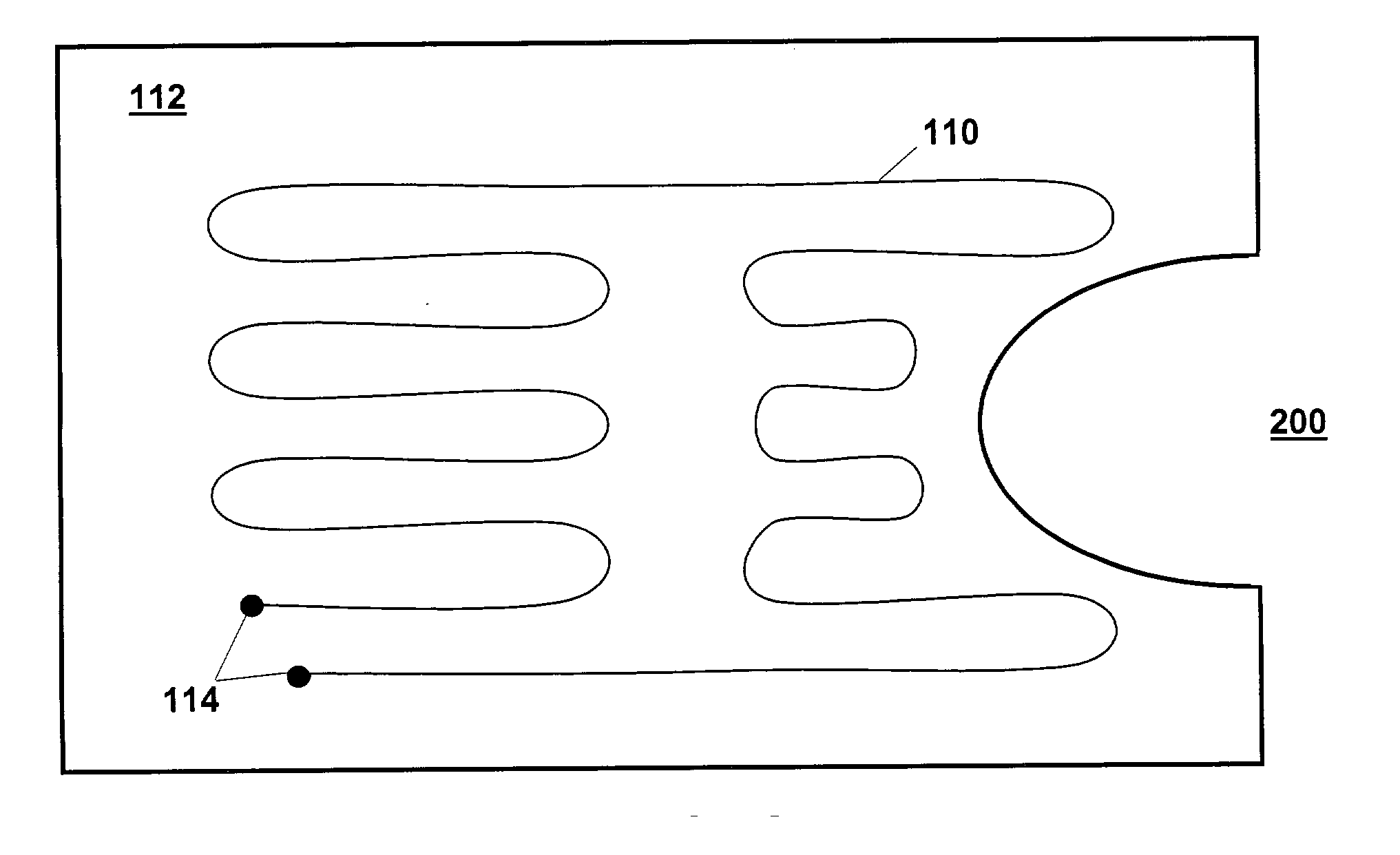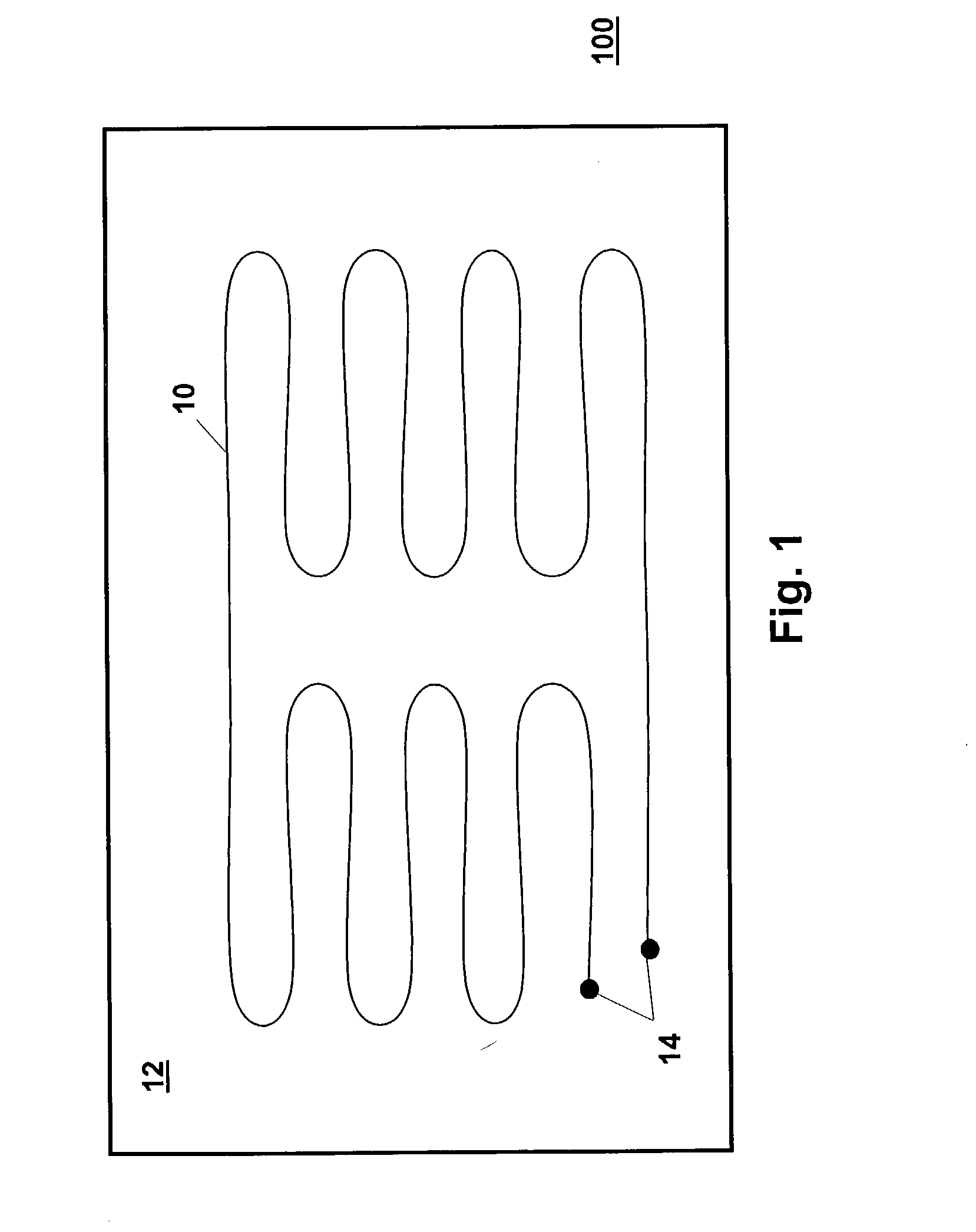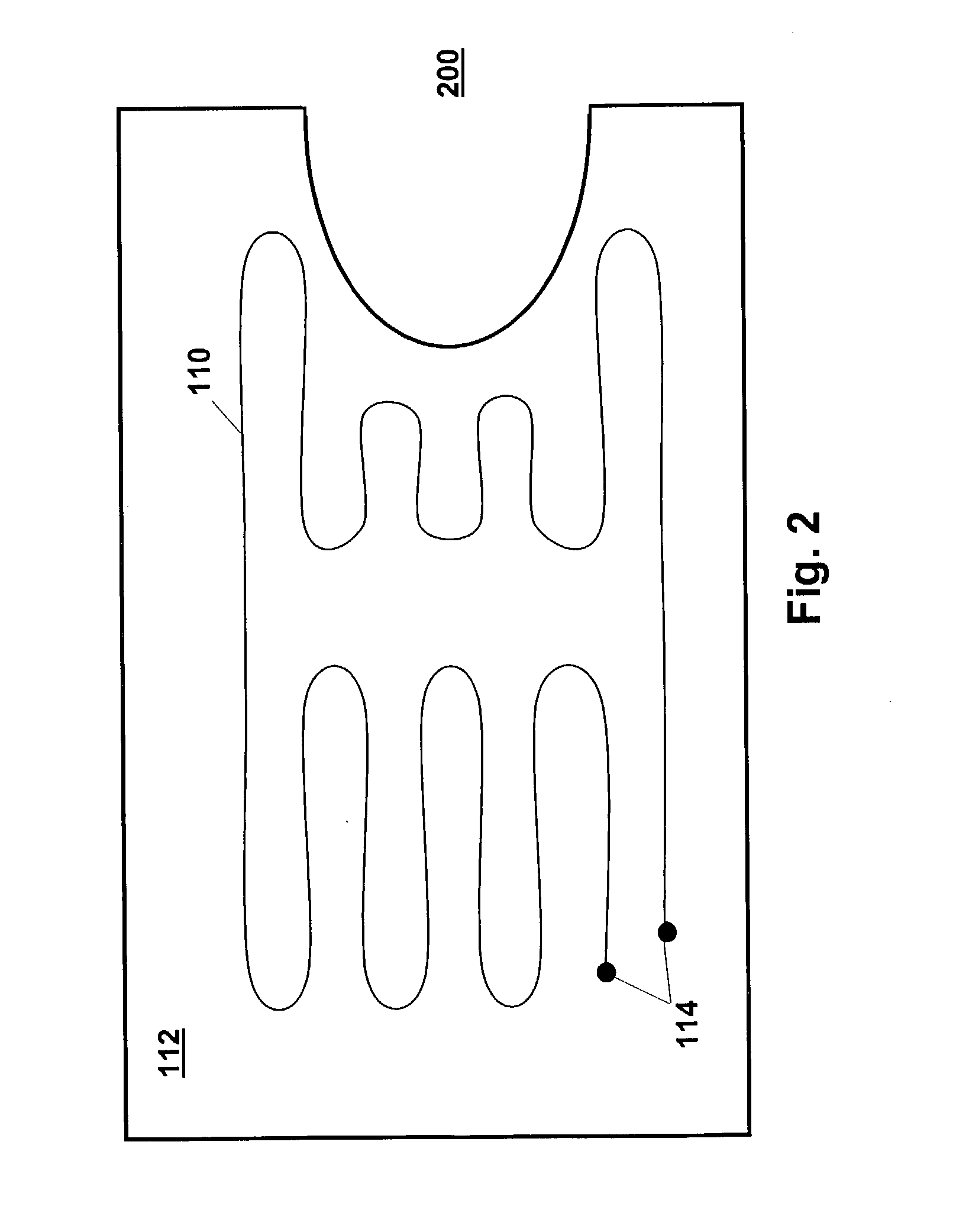Polymer-encapsulated heating elements for controlling the temperature of an aircraft compartment
a technology of heating elements and polymer encapsulation, which is applied in the field of aircraft, can solve the problems of adversely affecting the cargo carried by aircraft or the operation of aircraft systems or components, pollutants can be present in the propulsion exhaust stream, the ambient air, and the air is either removed or tolerated, so as to prevent, slow or inhibit the loss of heat
- Summary
- Abstract
- Description
- Claims
- Application Information
AI Technical Summary
Benefits of technology
Problems solved by technology
Method used
Image
Examples
example 1
[0098] Manufacture of a Polymer-Encapsulated Heating Element for an Aircraft Compartment
[0099] This Example describes how a sheet-shaped polymer-encapsulated heating element suitable for use in an aircraft compartment was made.
[0100] Resistance wires made from various alloys known for this purpose were spun together to form a stranded wire (electrical resistance heating material) having a desired resistance value required for the particular heater. The stranded wire comprised copper / Nickel resistance alloys including those known in the art as Alloy 180, Alloy 90, Alloy 60, and Alloy 30. The stranded wire was sewn onto a random non-woven fiberglass mat in a serpentine pattern having a size somewhat smaller than the total area of the final heating element. The fiberglass mat was trimmed to also be somewhat smaller than the total area of the final heating element.
[0101] A Teflon® sheet was draped across the bottom plate of a lamination mold. The mold was a flat aluminum plate with a...
example 2
[0104] Load Testing of Polymer-Encapsulated Heating Element
[0105] A polymer-encapsulated heating element made as described in Example 1 was subjected to load testing. In this testing, a force of 500 pounds was applied using a {fraction (1 / 4)} inch×{fraction (1 / 4)} inch steel pad to a heating element having a carpet and carpet pad thereon. This load was applied 10 times at evenly spaced locations across the face of the heating element, and then seven additional loads (increasing incrementally to 1245 pounds) were applied to evenly spaced locations across the face of the heating element.
[0106] The resistance of the electric circuit path in the heating element did not significantly increase following any load application step. These results indicate that the polymer-encapsulated heating element is able to endure load application that is no more than typical in some aircraft compartment environments. These results also indicate the suitability of using such heating elements in such co...
PUM
 Login to View More
Login to View More Abstract
Description
Claims
Application Information
 Login to View More
Login to View More - R&D
- Intellectual Property
- Life Sciences
- Materials
- Tech Scout
- Unparalleled Data Quality
- Higher Quality Content
- 60% Fewer Hallucinations
Browse by: Latest US Patents, China's latest patents, Technical Efficacy Thesaurus, Application Domain, Technology Topic, Popular Technical Reports.
© 2025 PatSnap. All rights reserved.Legal|Privacy policy|Modern Slavery Act Transparency Statement|Sitemap|About US| Contact US: help@patsnap.com



